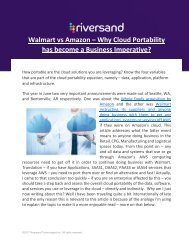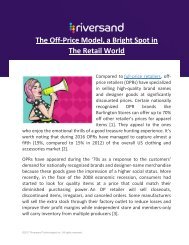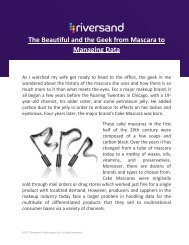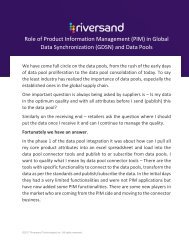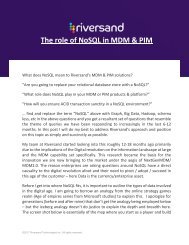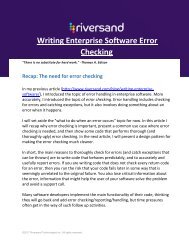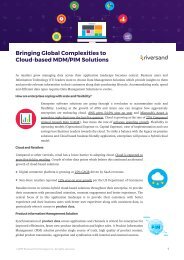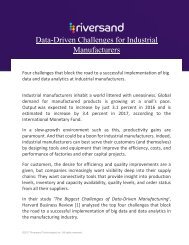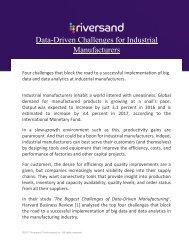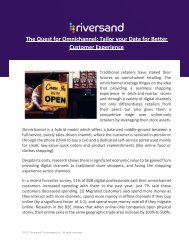Riversand PIM Book
Create successful ePaper yourself
Turn your PDF publications into a flip-book with our unique Google optimized e-Paper software.
How Does a Product Information Management Solution (<strong>PIM</strong>)<br />
aid in a Unified Commerce Paradigm?<br />
What is Unified Commerce?<br />
The short answer: competing on customer experience.<br />
Retail change A step beyond Omnichannel, the unified commerce business<br />
model is the response to the sharp increase in mobile usage rates and the<br />
shift from a product-centric approach towards customer-centricity.<br />
This new wave of digital synergy was born out of the consumer’s’ need for a<br />
personalized and seamless shopping experience wherever and whenever<br />
they are and is set to change forever the way companies internally structure<br />
and manage their business.<br />
In an omnichannel environment, each sales channel draws information from<br />
their own supporting data silos. Unified commerce unites all business channels<br />
(internal ERPs, mobile, website and physical terminals), connecting<br />
them to a central data warehouse where information is uploaded, updated<br />
and utilized, everywhere in the organization, in real-time.<br />
This hub of information acts as a “single source of truth” and eliminates the<br />
pressure to manually maintain data across the enterprise to ensure that the<br />
customer has a consistent brand experience.<br />
The unified commerce ecosystem takes into consideration both the consumer’s<br />
demand for seamless service and the retailer’s need for a technical infrastructure
The Era of Retail Change<br />
How Product Information Management helps unify Omni-channels<br />
Unified commerce is driven by the need for well organized, high-quality<br />
product content that is useful to the consumer thus increasing conversions<br />
and loyalty.<br />
The Product Information Management Solution is a middleware layer<br />
which serves as a central product repository and a source of product<br />
master information which aids companies to connect with their audience:<br />
Product Master Data Hub – centralized source for all the product master<br />
data, which is secured, backed-up and separates critical data from the use<br />
of that data.<br />
Analytics and Business Intelligence – business intelligence utilizing<br />
up-to-date data to monitor patterns to predict trends leading to higher<br />
profits, productivity, and efficiency, which when combined with customer<br />
information, can increase conversions and customer retention.<br />
A Single Set of Data Governance Rules – promotes a single version of the<br />
truth for product data, providing a stable, pre-defined architecture for<br />
dealing with multiple, complex data sources. It automates all the business<br />
functions which use product data and eliminates the need to manually<br />
input, consolidate and transfer data between different sections of the enterprise.<br />
Omnichannel Capabilities (and integrated support functions such as Print<br />
and DAM) – play a fundamental role in how product data is displayed and<br />
used by various sales channels and has a direct impact on customer immersion<br />
and how satisfied they are with a brand.



